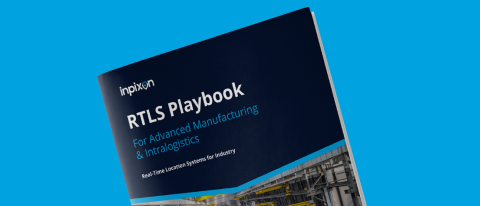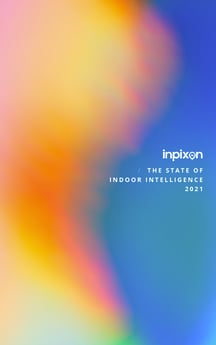Due to the availability of multiple technologies in the Real-Time Location Systems (RTLS) space, such as Chirp, Bluetooth Low Energy (BLE), and Ultra-Wideband (UWB), finding the most relevant solution for your organization can be a challenge. To help overcome this obstacle, we’re breaking down what makes each type of technology unique and how you can determine which is the right fit for your company’s needs.
What is Chirp?
Chirp Spread Spectrum is a radio frequency (RF) signal that increases or decreases the frequency overtime, making it a useful way to measure the distance or location of people and objects over large distances. It utilizes Time of Flight (ToF) estimation in order to precisely measure distance or utilizes Time of Arrival (ToA) with Time Difference of Arrival (TDoA) to calculate and communicate the location of both static and moving targets, such as assets, inventory, people and vehicles.
Key benefits of using Chirp include:
- Location accuracy of 1-2m
- Indoor and outdoor support
- Long-range accessibility up to 1000m
- Near real-time positioning
- Protection against radio frequency interference
Inpixon’s unique application of 2.4GHz chirp-enabled RF technology allows companies to track critical assets throughout large facilities and distances, making them easier to manage and secure.
What is BLE?
Bluetooth Low Energy or BLE, is another radio frequency technology for wireless communication that can be leveraged to detect and track the location of people, devices and assets in indoor settings. BLE was specifically created to consume very low power, significantly less than that of Bluetooth Classic versions and other RF standards. BLE integrates easily with smartphones and other wireless devices including wearables and is compatible with battery powered BLE beacons, making it cost-effective and versatile to use.
Key benefits of BLE include:
- Location accuracy within 5m
- Lower power and low cost
- Easy to deploy
- Extensible technology
Inpixon offers multiple use cases for BLE, including asset tracking, personnel tracking, proximity services, and more.
What is UWB?
Ultra-wideband, or UWB, is a short-range RF technology for wireless communication that can be leveraged to detect the location of people, devices, and assets with high precision. Like other communication protocols including Bluetooth and Wi-Fi, UWB can be used to transmit data between devices through radio waves. Its accuracy comes from its ability to send short nanosecond pulses over an “ultra-wide” range of frequencies.
While most ideal for smaller ranges, the location of UWB signals can be determined within 50 centimeters, in optimal conditions and deployment, and extremely low latency. UWB’s ability to locate targets using time-of-arrival (ToA) and quick nanosecond pulses with limited interference with other RF transmissions, allows for precise indoor positioning with near real-time results that also track device movements. Across short-ranges, UWB can deliver highly accurate, quick and secure communications, with minimal interference.
Key benefits of UWB include:
- Location accuracy within 40 cm
- Greater precision accuracy
- Real-time positioning
- Reliable and secure
UWB versus BLE versus Chirp
UWB and BLE are often used for similar use cases involving greater precision and indoor settings. However, there are key differences between them making each better-suited for different applications.
UWB technology typically delivers greater accuracy than BLE devices. This is in large part due to UWB’s distance-based method to determine location via its ToA monitoring. BLE positioning technology typically locates devices via RSSI, which yields a lower level of accuracy based on whether a device is transmitting a strong or weak signal relative to its position. BLE also has a much shorter range and data rate than UWB and is more prone to signal interference.
However, a key advantage of BLE is that it has a large tech ecosystem, making it a popular option for many use cases. It is used in many of today’s wireless devices and remains a top choice for locationing, offering an extensive set of flexible hardware options that can easily be implemented, such as BLE beacons.
Here is a table that summarizes the key features of BLE and UWB devices.
| Feature |
BLE |
UWB |
Chirp |
| Location Accuracy |
< 5 m |
+/- 40 cm |
1-2 m |
| Range |
Up to 100 m |
Up to 200 m |
Up to 1,000 m |
| Frequencies |
2.4 GHz |
3.1 - 10.6 GHz |
2.4 GHz |
How Inpixon Can Help
Whether it’s Chirp, BLE or UWB, Inpixon offers you the ability to utilize these technologies to deliver what your company needs. With Inpixon’s RTLS offerings, you can build an end-to-end solution that allows you to track the location of personnel, assets, devices and more and gain intelligence on how to make your operations smarter. From our proprietary RTLS chips, device-ready modules and specialized tags to industrial-grade RTLS anchors and powerful nanoLES Location Engine, Inpixon has everything you need to harness the power of Chirp, BLE and UWB to optimize your processes.
This blog post contains forward looking statements which are subject to risks and uncertainties. Please click here to learn more.


-3.png?length=1000&name=Inpixon%20LinkedIn%20Banner%20August%202025%20(2)-3.png)


